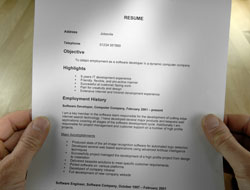Online Class: Collaboration Skills

no certificate
with CEU Certificate*
-
14Lessons
-
16Exams &
Assignments -
1,046Students
have taken this course -
7Hours
average time -
0.7CEUs
Course Description
Collaboration results in the best possible solution to any given issue since all the ideas, solutions, best practices, resources, skills, and issues were examined, discussed, and evaluated using the best possible criterion from a wide spectrum of knowledge, skills, and industry leaders.
This course looks at the collaboration processes, the dynamics within the group to include skills needed, motivational factors, how to manage conflicts that arise, and how to effectively listen to what the other person is trying to say. Along with listening, for collaboration to happen there must be consensus, which a lesson delves into and shows how it is more than teamwork involved in this systematic technique. Students are taught how to design a process map so a better understanding of all the issues and steps involved are visual and easy to understand, which enables the group to come to a better collaborative answer. With a number of people inevitably there will be differences of opinion so there will be barriers that must be overcome. You will learn the processes and best practices to use when this occurs.
Collaboration takes time but its end result is worth the efforts. Realizing this, this course has a lesson that shows one way to save time in this process is by running an effective meeting and the best techniques to communicate progress. Suggestions are given to keep the meeting to a predetermined time and there are even some great practical tips for getting everyone to the meeting on time. This lesson also covers ways to solve problems and tips for making smart decisions when the choices are tough.
Course Motivation
Others point to the definition including diversity – diversity in problem solving, ideas, and talents. Still there are those who toss into the definition mix the thoughts of a diversified team working together with the sole purpose to create betterment in the areas of operations, relationships, technology and overall structure.
One misstep in the definition occurs when someone confuses collaboration with innovation. Innovation simply means adding something new to the mix, whether it's a new method, idea, or job skill. This can be a result of collaboration, but it is not the definition – the two are not the same thing.
So how does this translate in the business world? It has been documented that many CEOs and other top-tier business professional have admitted that much of their success came from great "corporate teams," or "collaborative efforts from some great co-workers." Their success was a direct result of various groups of people sharing ideas, brain-storming a problem, and finding a working solution – it was the group defining the problem, seeking a solution, agreeing on the best course of action, and then implementing the fix. Some call it taking team work to the "next" level. But it's more than that.
Supervisors, managers, and business leaders like to see collaborative efforts, since those efforts reap great rewards. These rewards include: sharing knowledge and job skills, learning together, building consensus, and work retention as more employees find job satisfaction through collaboration. These rewards translate into solutions to complex problems and bringing needed knowledge, skills, and expertise to the table when needed. And sometimes this happens through another tactic of collaboration – divide and conquer. But so far, we've been looking at collaboration in a diminutive state. Let's look at an example of a collaborative effort in big business, where the stakes can be huge. Let's look at Microsoft and its software Microsoft Office and how the software giant used the collaborative effort of "divide and conquer."
One of the great obstacles Microsoft and other media giants, like Apple, have to overcome on a daily basis in the open market is with free products. "Free" rings true with consumers, especially if the product is simple to use and can add value to their life. So Microsoft had to divide and conquer the competition. What the leadership realized was its Office product's perceived value increased, as more and more customers used the service. So Microsoft upped the ante by reaching agreements with many computer companies to have Office uploaded onto its basic models. This was the "seed" the company needed to flood the market. With the larger user base, companies were encouraged to buy the software for their business, since employees were familiar with it and would not require a lot of training. Another benefit of using Office was it eliminated incompatibility issues with customers and other businesses, since the software program was popular and universally being used. This strategy is called "segmenting the market" or, as it is better known, "dividing" the market so it can "conquer." That is collaboration on multi-levels in big business.
Divide and conquer on a smaller level simply could be this example -- a business owner who wants to open a second office. Instead of assigning the task to two people and giving them three months to get the office open, he breaks the whole project up into smaller pieces involving more employees. While one is out looking at prospective locations, another is looking into the cost and availability of movers. Another individual is interviewing and hiring new employees to fill the office, while someone else is figuring out equipment needs. What would have taken a few people many months, now will be accomplished in one month, because of their collaborative efforts of "divide and conquer."
Sometimes a team comes to a defining moment in collaboration when they suddenly realize the true benefits associated with it. A great example was in the movie, An Officer and a Gentleman, where Zack Mayo (Richard Gere) is about to break the obstacle course record, but stops near the finish line, runs back, picks up Seeger (Lisa Eilbacher), and proceeds to coach and encourage her over the 12-foot wall so she will not be eliminated from the training course. As she makes it over the wall, and the two complete the course, the rest of the class is encouraging and cheering them. That is true collaboration. For outstanding results in any endeavor involving a team, collaboration is a vital ingredient in the recipe for success or you will end up with a fallen cake. There's the chance it might taste good, but it's not a cake you proudly display.
As you are beginning to see, the hardest part of collaboration is getting everyone to put their ego aside, so the person who excels at a certain task can take the lead. This takes negotiation, leadership, and communication skills all rolled into one. Once this lesson is learned, the whole team succeeds.
In the small business world, this lesson is one of the hardest for an owner to learn. He has invested his life savings into his business and thinks he must do everything. This leads to failure. The owner must realize he is not the expert at everything, but he needs to trust the people he hired. He needs to collaborate with them, so his business goals will be achieved. Collaboration is a definite skill that has to be learned -- it's learning to let go so the team, as a whole, can reach its predetermined goal.
There are other challenges associated with collaboration. One of the main stumbling blocks is easily overlooked by many managers. If it was actually realized, the results would be a more harmonious workplace and less stress on management. This overlooked stumbling block is the realization that collaboration requires a fundamentally different work setting from the hierarchal structures found in most businesses today. For collaboration to have a chance, the working environment must be flexible. Information, resources, and knowledge, must be freely shared among workers.
The other part of the overlooked equation is that employees are entering the work force with different perceptions and understandings. Baby Boomers understand work better in the hierarchal system that has been in existence since the 1950s, while the Millennials are used to a more team setting, where everything is shared. Toss Generation X into the picture, where you have a mix from the other two groups, and you have a group of people with some difficulty adapting to each other. The challenge for the leader of the team is to find compatibility and get everyone working together on the same page of instructions. The benefits will far outweigh the struggles for the group to find a working relationship. Each group of individuals brings valuable insight to the table, just from their backgrounds. The generation mixes can, and do, make dynamic teams once everyone knows and understands how each member will approach the task at hand. It's the leader's job to open this communication and keep it freely flowing, so collaboration can work its magic and reach its goal or goals the fastest and most efficient way possible.
Some of the benefits coming from this dynamic team will be keenness and awareness of the situation and task at hand; a perpetual motivation to complete the job; a weighing of all alternatives; team work and voluntarily seeking compromise; and finally, you would have a proactive, instead of a reactive, team, which was the difference between the 1992 and 2008/2012 Dream Teams.
As mentioned earlier, most will agree that collaboration is beneficial, but its value for some leaders is questionable. This questionable value partly comes from the culture in which collaboration is being attempted, while at other times, it has to do with the lack of effective management in its processes. Without true buy-in from the organization and its leaders, the actual value will not be realized. It takes buy-in for it to be a success. It takes commitment of resources. It takes the proper culture for collaboration to thrive. But with all its nuances in definition and perceived value, collaboration can, and does, bring an organization true merit and worth. Collaboration, used properly, can bring projects to a close faster, place new products in customers' hands ahead of schedule, and actually reduce overhead, or even startup costs, for new innovations.
And collaboration has the ability to reduce turnover in personnel, since many enjoy teamwork and the freedom it brings. Teamwork reduces the stress on individuals, since they do not feel the weight of a complete project on their shoulders. Utilizing collaboration to create a team, allows employees to feel as if they are a part of something bigger than themselves and gives the feeling of accomplishment when they overcome an obstacle that is perceivably larger than one person. All of this together adds to a reduction in turnover. This can be a great savings for a company, considering the average cost for recruiting, screening, training, and getting a new worker plugged in to an organization costs about $4,000. So, with all these values, and with the advances in technology to allow team members to be in varied locations, collaboration has become a valuable resource for leaders to use to reach a specified goal.
- Completely Online
- Self-Paced
- Printable Lessons
- Full HD Video

- 6 Months to Complete
- 24/7 Availability
- Start Anytime
- PC & Mac Compatible
- Android & iOS Friendly
- Accredited CEUs

Course Lessons
Lesson 1: What is Collaboration? Benefits of Collaboration
 Lesson 1 Video
Lesson 1 Video Lesson discussions: Reasons for Taking this Course
Lesson discussions: Reasons for Taking this Course Complete Assignment: An Introduction
Complete Assignment: An Introduction Assessment: Exam 1
Assessment: Exam 1
Lesson 2: Overcoming Defensiveness
 Lesson 2 Video
Lesson 2 Video Assessment: Exam 2
Assessment: Exam 2
Lesson 3: Understanding Truthfulness in Collaboration
 Lesson 3 Video
Lesson 3 Video Assessment: Exam 3
Assessment: Exam 3
Lesson 4: Listening Skills Requirement in Collaboration
 Lesson 4 Video
Lesson 4 Video Assessment: Exam 4
Assessment: Exam 4
Lesson 5: Self-Awareness and Awareness of Others in Collaboration
 Lesson 5 Video
Lesson 5 Video Assessment: Exam 5
Assessment: Exam 5
Lesson 6: The Life Cycle of Collaborative Teams
 Lesson 6 Video
Lesson 6 Video Assessment: Exam 6
Assessment: Exam 6
Lesson 7: Building Consensus
 Lesson 7 Video
Lesson 7 Video Assessment: Exam 7
Assessment: Exam 7
Lesson 8: Resolving Conflicts
 Lesson 8 Video
Lesson 8 Video Assessment: Exam 8
Assessment: Exam 8
Lesson 9: Designing a Process Map
 Lesson 9 Video
Lesson 9 Video Assessment: Exam 9
Assessment: Exam 9
Lesson 10: Manage Accountability
 Lesson 10 Video
Lesson 10 Video Assessment: Exam 10
Assessment: Exam 10
Lesson 11: Overcome Barriers
 Lesson 11 Video
Lesson 11 Video Assessment: Exam 11
Assessment: Exam 11
Lesson 12: Running Effective Meetings and Communicating Progress
 Lesson 12 Video
Lesson 12 Video Assessment: Exam 12
Assessment: Exam 12
Lesson 13: Using Tools for Viewing Problems, Generating Ideas, and Evaluating Solutions
 Lesson 13 Video
Lesson 13 Video Assessment: Exam 13
Assessment: Exam 13
Lesson 14: Problem Solving and Negotiating
 Lesson 14 Video
Lesson 14 Video Lesson discussions: Course Completion Poll: Your Thoughts; Course Comments; Program Evaluation Follow-up Survey (End of Course)
Lesson discussions: Course Completion Poll: Your Thoughts; Course Comments; Program Evaluation Follow-up Survey (End of Course) Assessment: Exam 14
Assessment: Exam 14 Assessment: The Final Exam
Assessment: The Final Exam
Learning Outcomes
- Define what collaboration is.
- Describe overcoming defensiveness.
- Describe understanding truthfulness in collaboration.
- Summarize listening skills requirement in collaboration.
- Describe self-awareness and awareness of others in collaboration.
- Describe the life cycle of collaborative teams.
- Describe methods for building consensus.
- Describe methods for resolving conflicts.
- Describe methods for designing a process map.
- Describe methods for running effective meetings and communicating progress.
- Define tools for viewing problems, generating ideas, and evaluating solutions.
- Demonstrate mastery of lesson content at levels of 70% or higher.
Additional Course Information

- Document Your Lifelong Learning Achievements
- Earn an Official Certificate Documenting Course Hours and CEUs
- Verify Your Certificate with a Unique Serial Number Online
- View and Share Your Certificate Online or Download/Print as PDF
- Display Your Certificate on Your Resume and Promote Your Achievements Using Social Media

Choose Your Subscription Plan
No Certificate / No CEUs
This course only
| Includes certificate | X |
| Includes CEUs | X |
| Self-paced |

|
| Instructor support |

|
| Time to complete | 6 months |
| No. of courses | 1 course |
Certificate & CEUs
This course only
| Includes certificate |

|
| Includes CEUs |

|
| Self-paced |

|
| Instructor support |

|
| Time to complete | 6 months |
| No. of courses | 1 course |
Certificates & CEUs
Includes all 600+ courses
| Includes certificate |

|
| Includes CEUs |

|
| Self-paced |

|
| Instructor support |

|
| Time to complete | 12 Months |
| No. of courses | 600+ |
Certificates & CEUs
Includes all 600+ courses
| Includes certificate |

|
| Includes CEUs |

|
| Self-paced |

|
| Instructor support |

|
| Time to complete | 24 Months |
| No. of courses | 600+ |
Student Testimonials
- "Very informative." -- Kathy R.
Related Courses
-
 87 hours
8.7 CEUs
Writing Help Course Bundle
$135.00
87 hours
8.7 CEUs
Writing Help Course Bundle
$135.00
-
 29 hours
2.9 CEUs
Human Resources Productivity Course Bundle
$120.00
29 hours
2.9 CEUs
Human Resources Productivity Course Bundle
$120.00
-
 36 hours
3.6 CEUs
Ultimate Secretary Training Bundle
$150.00
36 hours
3.6 CEUs
Ultimate Secretary Training Bundle
$150.00
-
 4 hours
0.4 CEUs
Resolving Workplace Conflict
$95.00
4 hours
0.4 CEUs
Resolving Workplace Conflict
$95.00
-
 6 hours
0.6 CEUs
General Receptionist
$95.00
6 hours
0.6 CEUs
General Receptionist
$95.00
-
 7 hours
0.7 CEUs
Negotiation Skills
$95.00
7 hours
0.7 CEUs
Negotiation Skills
$95.00
-
 7 hours
0.7 CEUs
Organizational Behavior in Business
$95.00
7 hours
0.7 CEUs
Organizational Behavior in Business
$95.00
-
 9 hours
0.9 CEUs
Product Management 101
$95.00
9 hours
0.9 CEUs
Product Management 101
$95.00
-
 7 hours
0.7 CEUs
Collaboration Skills
$95.00
7 hours
0.7 CEUs
Collaboration Skills
$95.00
-
 7 hours
0.7 CEUs
Management Consultant 101
$95.00
7 hours
0.7 CEUs
Management Consultant 101
$95.00
-
 7 hours
0.7 CEUs
How to Deal with Difficult Personalities
$95.00
7 hours
0.7 CEUs
How to Deal with Difficult Personalities
$95.00
-
 5 hours
0.5 CEUs
Lawful Employee Termination
$95.00
5 hours
0.5 CEUs
Lawful Employee Termination
$95.00
-
 5 hours
0.5 CEUs
Creative Thinking
$95.00
5 hours
0.5 CEUs
Creative Thinking
$95.00
-
 8 hours
0.8 CEUs
Procurement Management
$95.00
8 hours
0.8 CEUs
Procurement Management
$95.00
-
 6 hours
0.6 CEUs
Business Branding 101
$95.00
6 hours
0.6 CEUs
Business Branding 101
$95.00
-
 7 hours
0.7 CEUs
Respectful International Workplace
$95.00
7 hours
0.7 CEUs
Respectful International Workplace
$95.00
-
 6 hours
0.6 CEUs
Sustainable Development for Business
$95.00
6 hours
0.6 CEUs
Sustainable Development for Business
$95.00
-
 11 hours
1.1 CEUs
How to Write Effective Policies and Procedures
$95.00
11 hours
1.1 CEUs
How to Write Effective Policies and Procedures
$95.00
-
 7 hours
0.7 CEUs
Preventing Workplace Harassment
$95.00
7 hours
0.7 CEUs
Preventing Workplace Harassment
$95.00
-
 7 hours
0.7 CEUs
Innovative Thinking
$95.00
7 hours
0.7 CEUs
Innovative Thinking
$95.00
-
 5 hours
0.5 CEUs
Goal Setting 101
$95.00
5 hours
0.5 CEUs
Goal Setting 101
$95.00
-
 6 hours
0.6 CEUs
Workplace Drug Use - An HR Guide
$95.00
6 hours
0.6 CEUs
Workplace Drug Use - An HR Guide
$95.00
-
 14 hours
1.4 CEUs
Report Writing 101
$95.00
14 hours
1.4 CEUs
Report Writing 101
$95.00
-
 7 hours
0.7 CEUs
Lean Management
$95.00
7 hours
0.7 CEUs
Lean Management
$95.00
-
 9 hours
0.9 CEUs
Introduction to Six Sigma
$95.00
9 hours
0.9 CEUs
Introduction to Six Sigma
$95.00
-
 7 hours
0.7 CEUs
Introduction to Ethics
$95.00
7 hours
0.7 CEUs
Introduction to Ethics
$95.00
-
 7 hours
0.7 CEUs
Introduction to Logic
$95.00
7 hours
0.7 CEUs
Introduction to Logic
$95.00
-
 7 hours
0.7 CEUs
Leadership Skills for Managers
$95.00
7 hours
0.7 CEUs
Leadership Skills for Managers
$95.00
-
 6 hours
0.6 CEUs
Fair Standards Labor Act and the Workforce
$95.00
6 hours
0.6 CEUs
Fair Standards Labor Act and the Workforce
$95.00
-
 5 hours
0.5 CEUs
Habits of Millionaires
$95.00
5 hours
0.5 CEUs
Habits of Millionaires
$95.00
-
 6 hours
0.6 CEUs
Personal Assistant 101
$95.00
6 hours
0.6 CEUs
Personal Assistant 101
$95.00
-
 11 hours
1.1 CEUs
Mediation 101
$95.00
11 hours
1.1 CEUs
Mediation 101
$95.00
-
 5 hours
0.5 CEUs
Kaizen 101 - An Introduction
$95.00
5 hours
0.5 CEUs
Kaizen 101 - An Introduction
$95.00
-
 8 hours
0.8 CEUs
Creating a Positive Work Environment
$95.00
8 hours
0.8 CEUs
Creating a Positive Work Environment
$95.00
-
 6 hours
0.6 CEUs
Goal Setting for Business
$95.00
6 hours
0.6 CEUs
Goal Setting for Business
$95.00
-
 7 hours
0.7 CEUs
Financial Analysis 101: Planning and Control
$95.00
7 hours
0.7 CEUs
Financial Analysis 101: Planning and Control
$95.00
-
 7 hours
0.7 CEUs
Sensitivity Training for the Workplace
$95.00
7 hours
0.7 CEUs
Sensitivity Training for the Workplace
$95.00
-
 7 hours
0.7 CEUs
Interpersonal Communication
$95.00
7 hours
0.7 CEUs
Interpersonal Communication
$95.00









